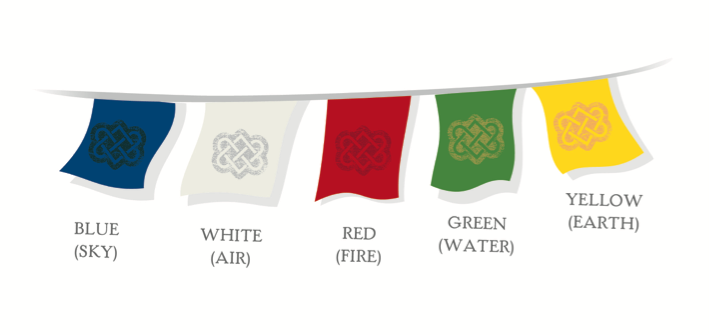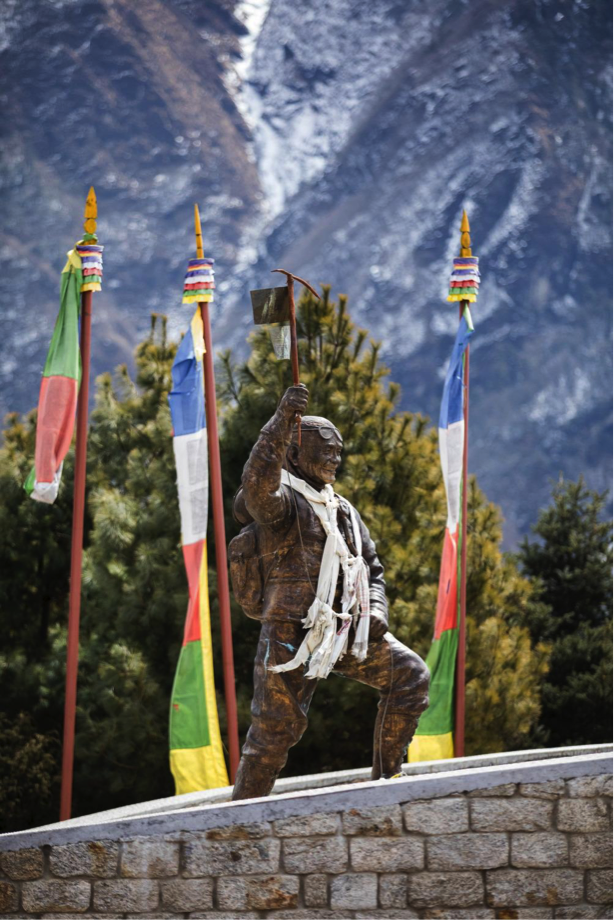Seen everywhere in the mountains, valleys, and sacred sites of Nepal, prayer flags are a symbol of peace, goodwill, and compassion. Originating in Tibet, early versions of prayer flags were used in battle. As time passed, the flags came to take on more spiritual meaning.

Each flag color represents one of the five elements.
Each of the five colors are always arranged from left to right in a specific order: blue, white, red, green, and yellow and represent the five elements: sky, air, fire, water, and earth, respectively.

Lung Ta (horizontal) prayer flags, pictured above, are square or rectangular shaped and are commonly hung on a diagonal line between two objects in high places such as the tops of temples, monasteries, stupas, or mountain passes. Darchor (vertical) prayer flags, pictured below, are usually large single rectangles attached to poles along their vertical edge.

Darchor prayer flags frame a statue of Tenzing Norgay near the village of Namche Bazaar in Nepal.
Over time, as the flags weather the elements, the bright colors of the flags fade to white. New prayer flags are hung alongside the old, acknowledging life’s continuous cycle. It is disrespectful to place flags on the ground or to use them as clothing. To dispose of old prayer flags, burn them, so that smoke may carry their blessings to the all.

As prayer flags are exposed to the elements, their colors fade. This process symbolizes a welcoming of life’s changes and an acknowledgment of a greater ongoing cycle.













